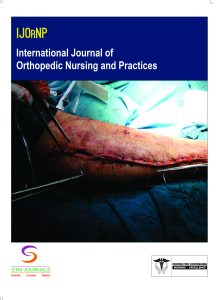[{“box”:0,”content”:”[if 992 equals=”Open Access”]n
n
Open Access
nn
n
n[/if 992]n
n
n
n
n

n
Apoorv Garg, Anil Kumar Garg, Jatinder Kaur
n
- n t
n
n
n[/foreach]
n
n[if 2099 not_equal=”Yes”]n
- [foreach 286] [if 1175 not_equal=””]n t
- Practitioner, Assistant Professor, Assistant Professor WE HEAL Centre of Physiotherapy, Rukmini Devi Institute of Advanced Studies, Rukmini Devi Institute of Advanced Studies New Delhi, New Delhi, New Delhi India, India, India
n[/if 1175][/foreach]
n[/if 2099][if 2099 equals=”Yes”][/if 2099]n
Abstract
nPhysiotherapists are essential in helping athletes with physical and psychological issues connected to their activity. Effective treatment and the formulation of athletes’ expectations regarding the restoration of health issues require a solid interaction between the physiotherapist and the athlete. Thus, when designing a rehabilitation program, it is imperative to take the expectations of the athletes with the specific problem into consideration. Since the dawn of civilization, physiotherapy methods have been used as a therapeutic modality in all cultures, and their application in athletic contexts is well-established. Nonetheless, there is a dearth of empirical data about the physiological, psychological, and therapeutic benefits of widely applied physical therapy methods. This study examines both the most recent literature on the application of physiotherapy to athletes and the earlier and contemporary research on the subject. There was conflicting information on the best method and duration of application, and there was little consensus in English sources regarding the effectiveness of physical therapy. Clearly, further research is needed to determine the function of physiotherapy, a time-consuming approach used by physiotherapists, in order to settle certain controversial concerns surrounding this treatment modality and to support its usage.
n
Keywords: Sports, physiotherapy, mental and physical health, athletes
n[if 424 equals=”Regular Issue”][This article belongs to International Journal of Orthopedic Nursing and Practices(ijornp)]
n
n
n
n
n
nn[if 992 equals=”Open Access”] Full Text PDF Download[/if 992] n[if 992 not_equal=”Open Access”]
[/if 992]n[if 992 not_equal=”Open Access”] nnn[/if 992]nn[if 379 not_equal=””]n
Browse Figures
n
n
n[/if 379]n
References
n[if 1104 equals=””]n
- Smith BJ. Promotion of physical activity in primary health care: an update of the evidence of interventions. J Sci Med Sport.2004; 7(Suppl 1): 67–73.
- Brown WJ. Individual or population approaches to the promotion of physical activity…is that the question? J Sci Med Sport.2006; 9(1–2): 35–7.
- Riddoch C, Puig-Ribera A, Cooper A. Effectiveness of physical activity promotion schemes in primary care: a review. London: Health Education Authority;
- Brown WJ, Mummery K, Eakin E, et al. 10,000 Steps Rockhampton: evaluation of a whole community approach to improving population levels of physical activity. J Phys Act Health. 2006; 3(1): 1–14.
- Owen N. Strategic initiatives to promote participation in physical activity. Health Promot Int. 1996; 11(3): 213–9.
- Bennett C, Grant Specialisation in physiotherapy: a mark of maturity. Aust J Physiother. 2004; 50(1): 3–5.
- Caspersen C, Powell K, Christenson Physical activity, exercise and physical fitness: definitions and distinctions for health-related research. Public Health Rep. 1985; 100(2): 126–130.
- Webborn N, Willick S, Reeser JC. Injuries among disabled athletes during the 2002 Winter Paralympic Games. Med Sci Sports Exerc. 2006; 38(5): 811–
- Nyland J, Snouse S, Anderson M, Kelly T, Sterling JC. Soft tissue injuries to USA paralympians at the 1996 summer games. Arch Phys Med Rehabil. 2000; 81(3): 368–
- Sheedy J, Smith B, Bauman A, et al. A controlled trial of behavioural education to promote exercise among physiotherapy outpatients. Aust J Physiother. 2000; 46(4): 281–9.
- Minor M. Physical activity and the management of arthritis.
- Ann Behav Med. 1991; 13(3):
117–24. - Tulloch H, Fortier M, Hogg W. Physical activity counselling in primary care: who has and who should counsel? Patient Educ Couns. 2006; 64(1–3): 6–20.
- Sorensen JB, Skovgaard T, Puggaard L. Exercise on prescription in general practice: a systematic review. Scand J Prim Health Care. 2006; 24(2): 69–74.
- Fortier M, Tulloch H, Hogg W. A good fit. Integrating physical activity counsellors into family practice. Can Fam Physician.2006; 52(8): 942–4.
nn[/if 1104][if 1104 not_equal=””]n
- [foreach 1102]n t
- [if 1106 equals=””], [/if 1106][if 1106 not_equal=””],[/if 1106]
n[/foreach]
n[/if 1104]
nn
nn[if 1114 equals=”Yes”]n
n[/if 1114]
n
n

n
International Journal of Orthopedic Nursing and Practices
n
n
n
n
n
n
| Volume | 02 | |
| [if 424 equals=”Regular Issue”]Issue[/if 424][if 424 equals=”Special Issue”]Special Issue[/if 424] [if 424 equals=”Conference”][/if 424] | 01 | |
| Received | April 30, 2024 | |
| Accepted | May 21, 2024 | |
| Published | May 30, 2024 |
n
n
n
n
n
n function myFunction2() {n var x = document.getElementById(“browsefigure”);n if (x.style.display === “block”) {n x.style.display = “none”;n }n else { x.style.display = “Block”; }n }n document.querySelector(“.prevBtn”).addEventListener(“click”, () => {n changeSlides(-1);n });n document.querySelector(“.nextBtn”).addEventListener(“click”, () => {n changeSlides(1);n });n var slideIndex = 1;n showSlides(slideIndex);n function changeSlides(n) {n showSlides((slideIndex += n));n }n function currentSlide(n) {n showSlides((slideIndex = n));n }n function showSlides(n) {n var i;n var slides = document.getElementsByClassName(“Slide”);n var dots = document.getElementsByClassName(“Navdot”);n if (n > slides.length) { slideIndex = 1; }n if (n (item.style.display = “none”));n Array.from(dots).forEach(n item => (item.className = item.className.replace(” selected”, “”))n );n slides[slideIndex – 1].style.display = “block”;n dots[slideIndex – 1].className += ” selected”;n }n”}]

